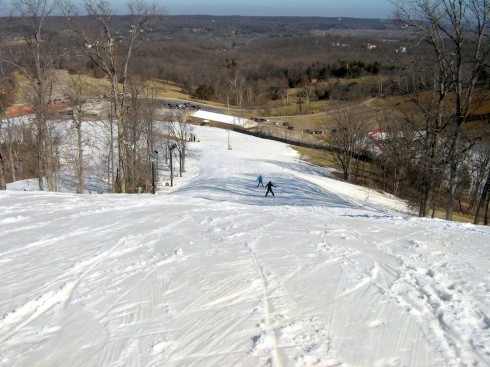Application of a lever and a wheel and axle to get a car out of a frozen lake.
Tag: physics applications
Ski Trip (to Hidden Valley)

We took a school trip to the ski slopes in Hidden Valley. It was the interim, and it was a day dedicated to taking a break. However, it would have been a great place to talk about gradients, changes in slopes, and first and second differentials. The physics of mass, acceleration, and friction would have been interesting topics as well.

This year has been cooler than last year, but they’ve still struggled a bit to keep snow on the slopes. They make the snow on colder nights, and hope it lasts during the warmer spells. The thermodynamics of ice formation would fit in nicely into physics and discussion of weather, while the impact of a warming climate on the economy is a topic we’ve broached in environmental science already.

Landing the Mars Rover: 7 Minutes of Terror
NASA gets dramatic. But the drama is oh so appropriate when you see what they have to do to land a rover on Mars. There are so many steps to the landing — heat shields, atmospheric friction, parachute, rockets — that it’ll be amazing if it works, and the video is a wonderful “strike the imagination” introduction to the physics of forces.
Appropriate Technology: Innovation with Light
Not a lot of light penetrates the galvanized steel roofs that are ubiquitous in slums around the world. Alfredo Moser came up with one ridiculously cheap solution (via the World Social Forum, 2011).
While this the kind of cheap, elegant solution I would go for in a heartbeat, I’m pretty sure my wife would veto. For the more stylistically conscious – and for people with a bit more money in their pockets – there are $2.00 LED lights advocated by The Appropriate Technology Collaborative (ATC). A lot of people in dire poverty live in the slums, but that’s not the case for everyone.
The ATC’s seems to focus on projects designed by university students and implemented in the third world. If they work, the designs are published with a Creative Commons license so that other Non Governmental Organizations (NGO’s) that work in poorer countries can use and distribute them. Their blog has a lot of good information. And, there’s also the Global Bucket project that I’m still keeping an eye on.